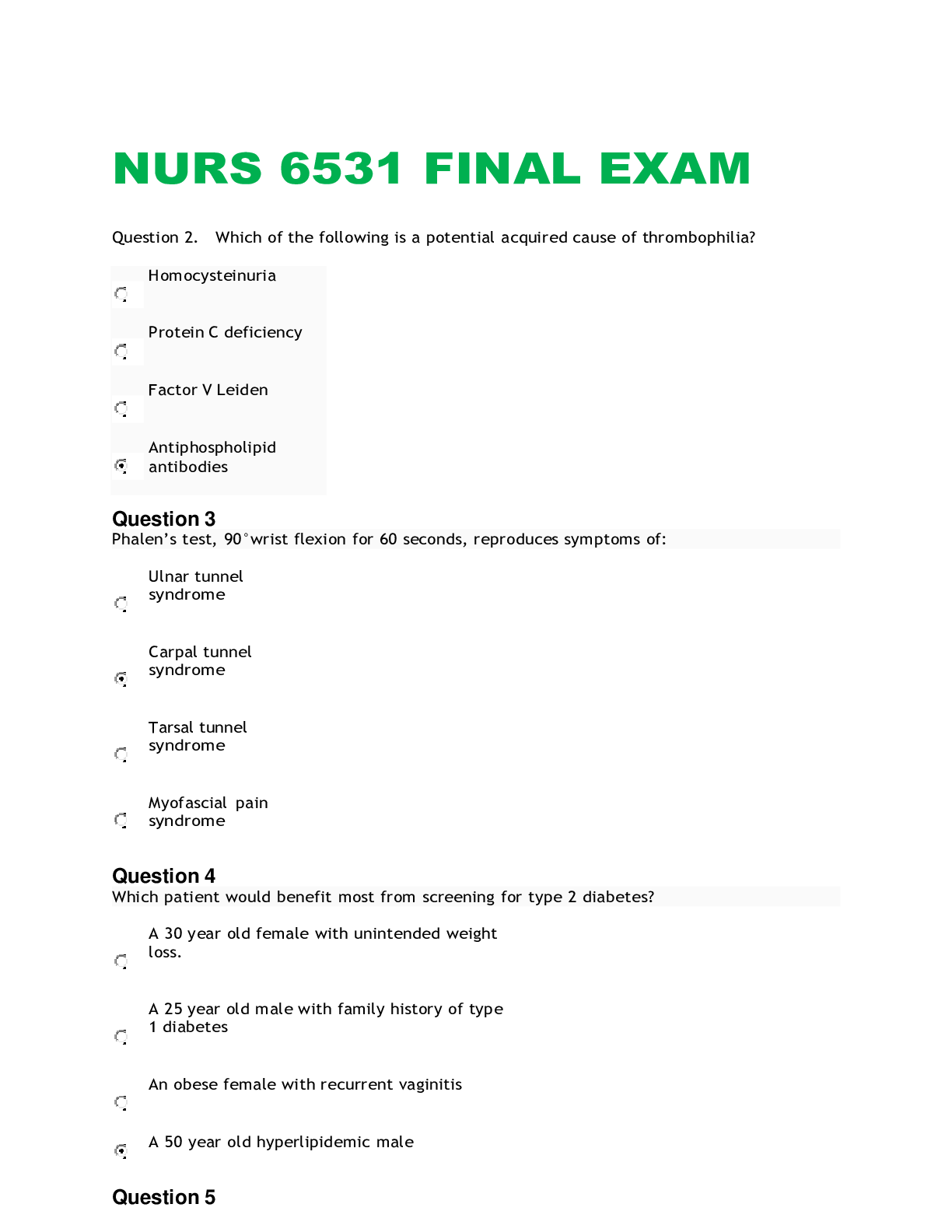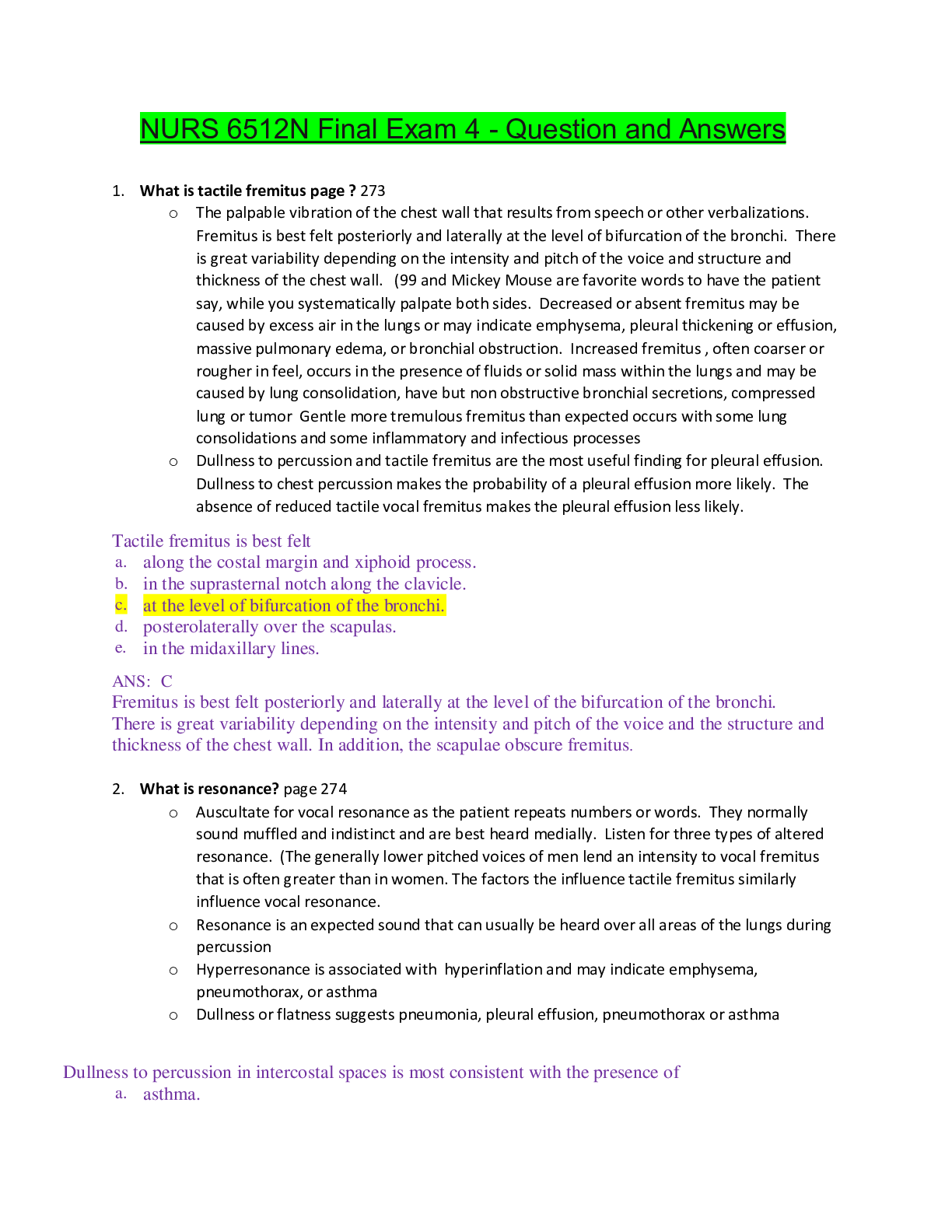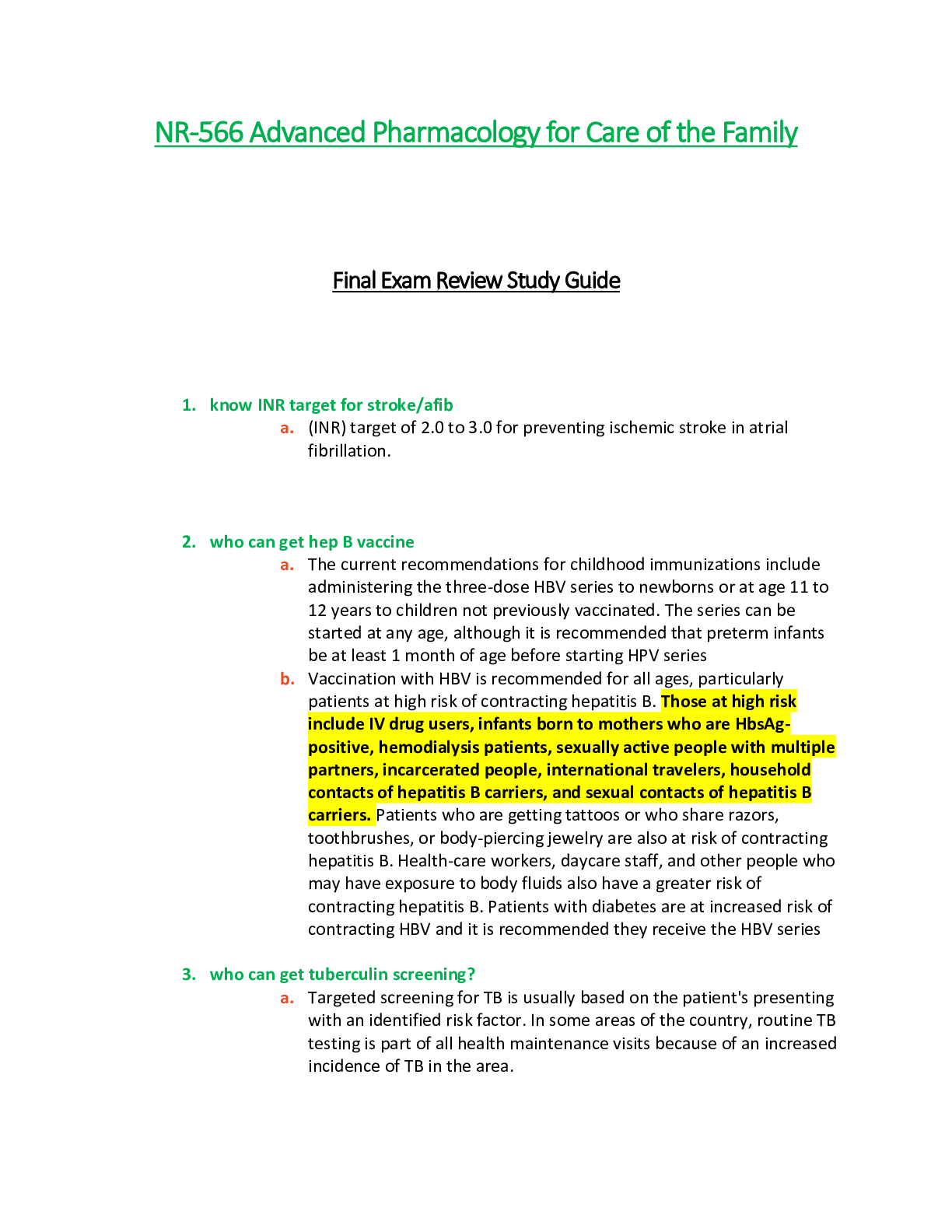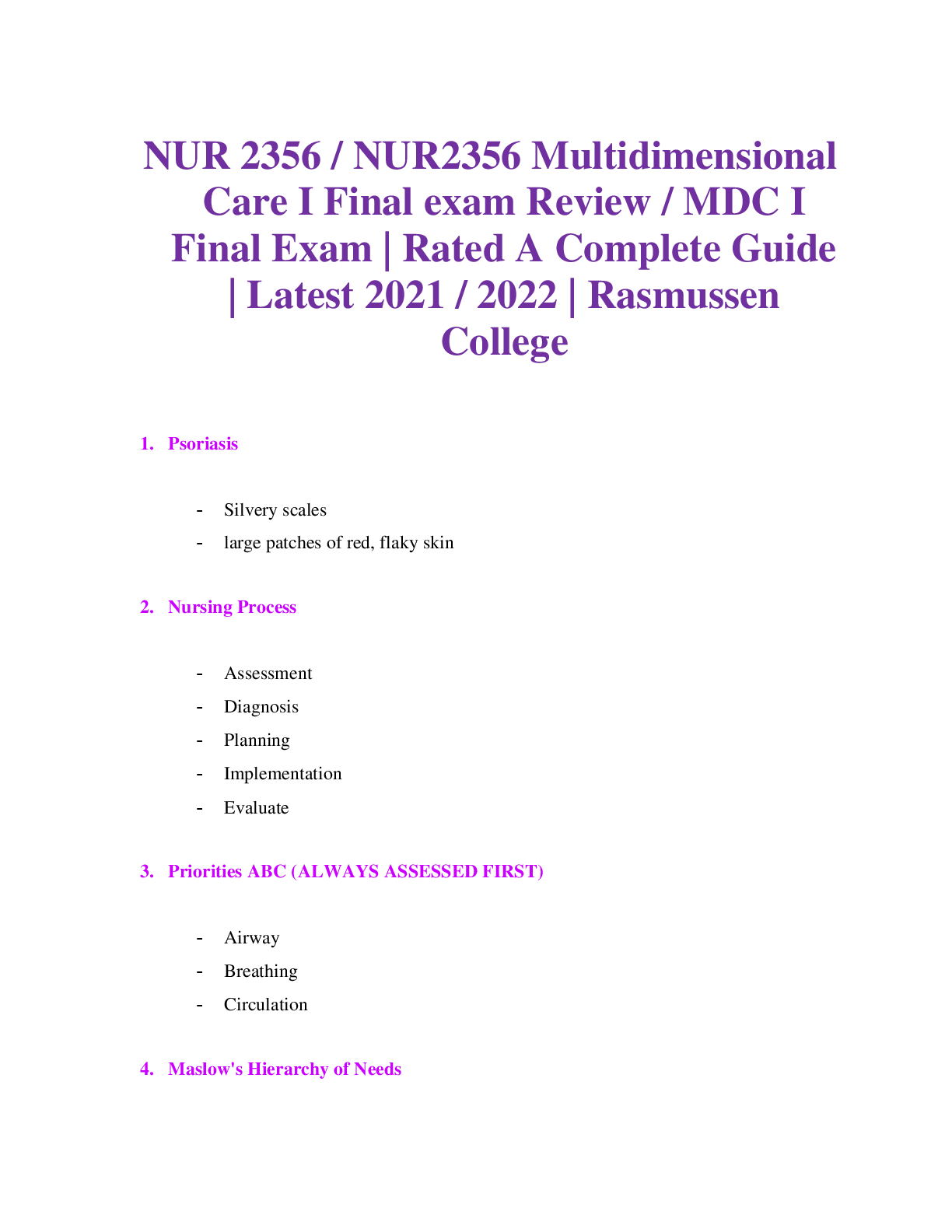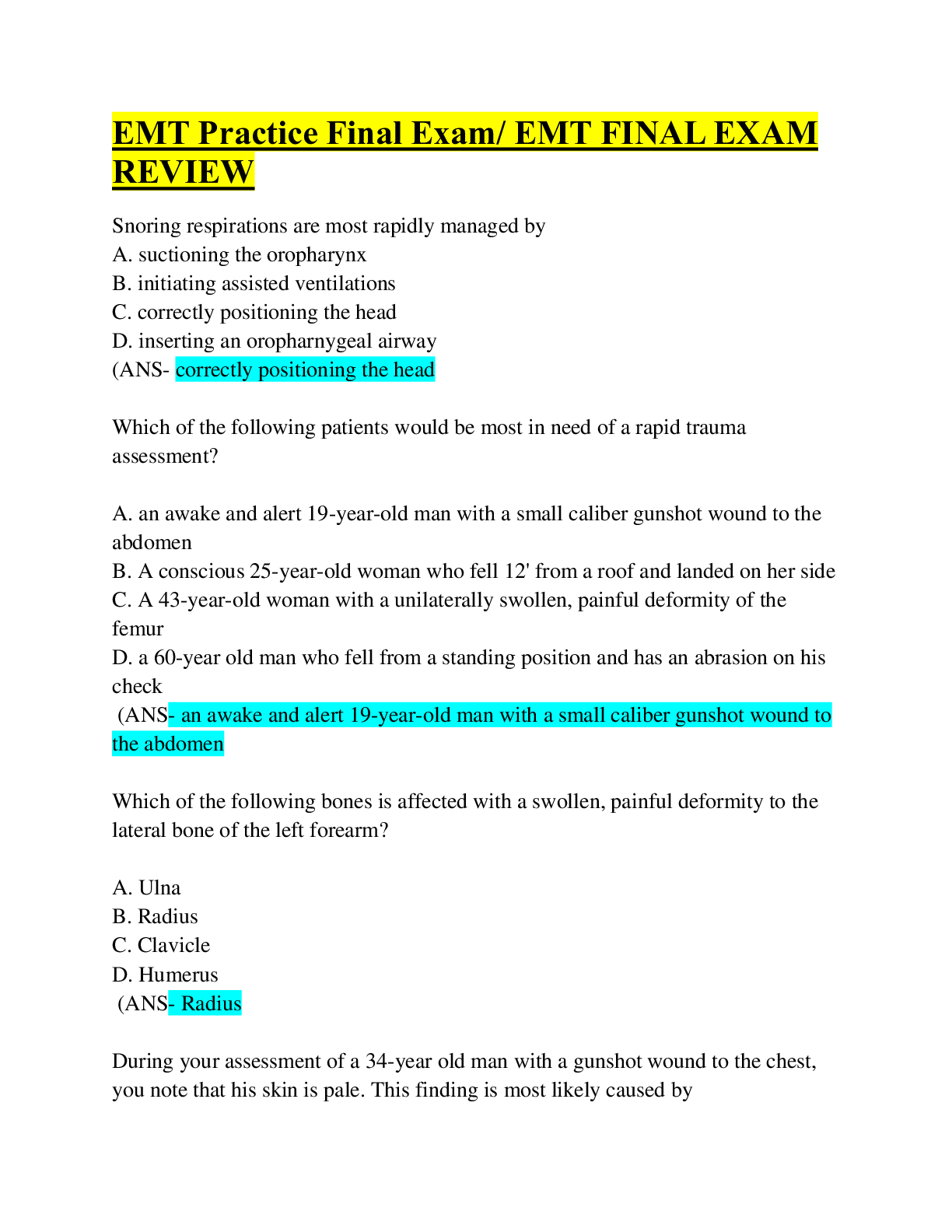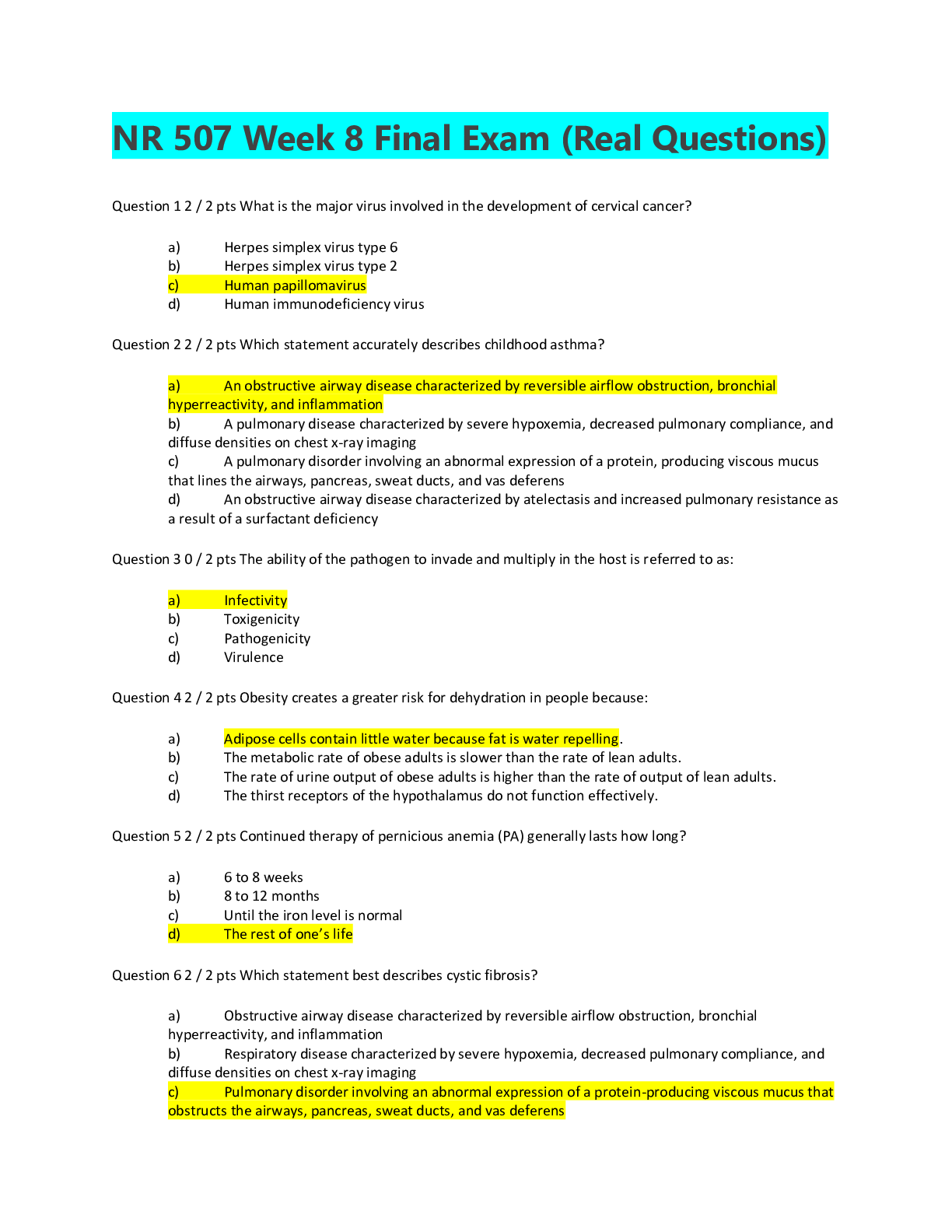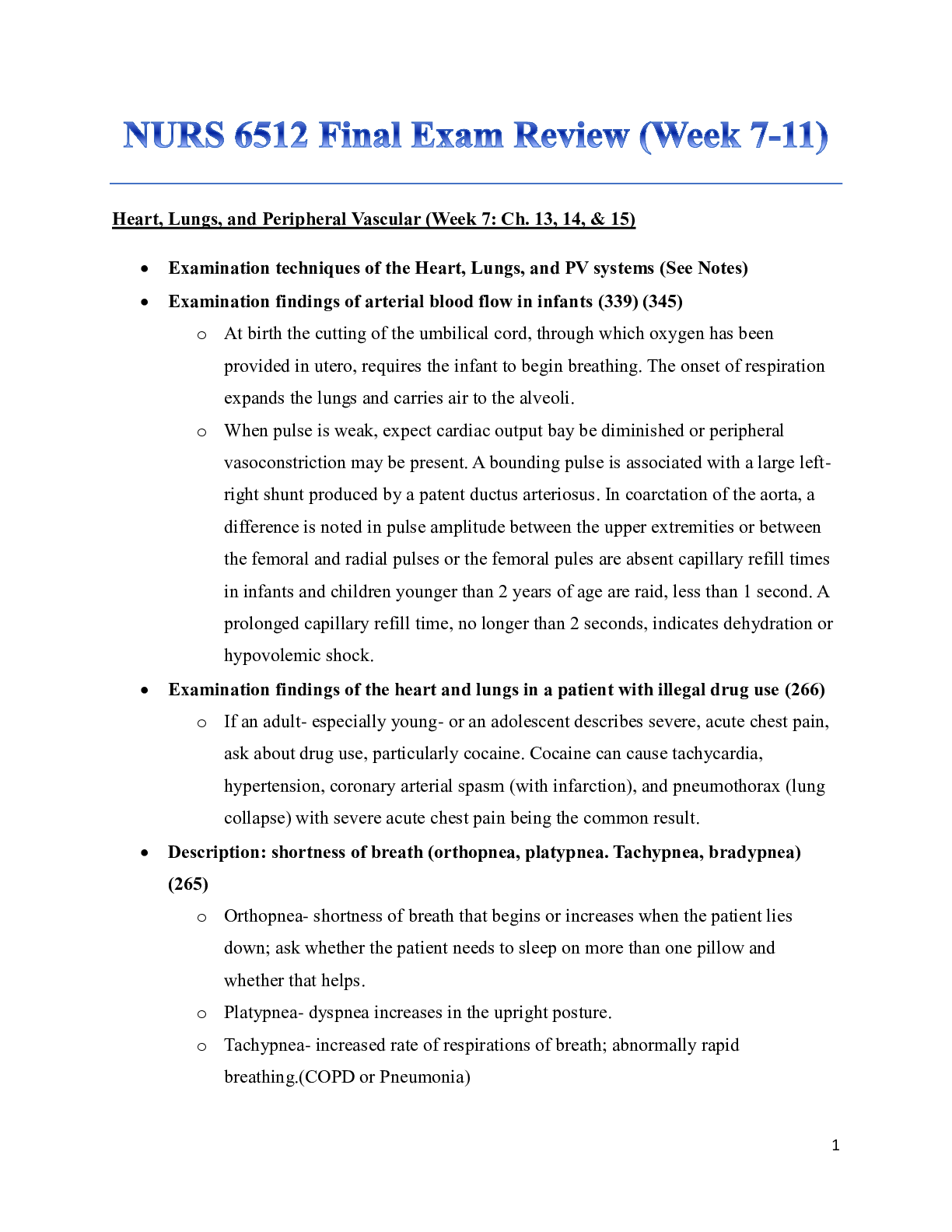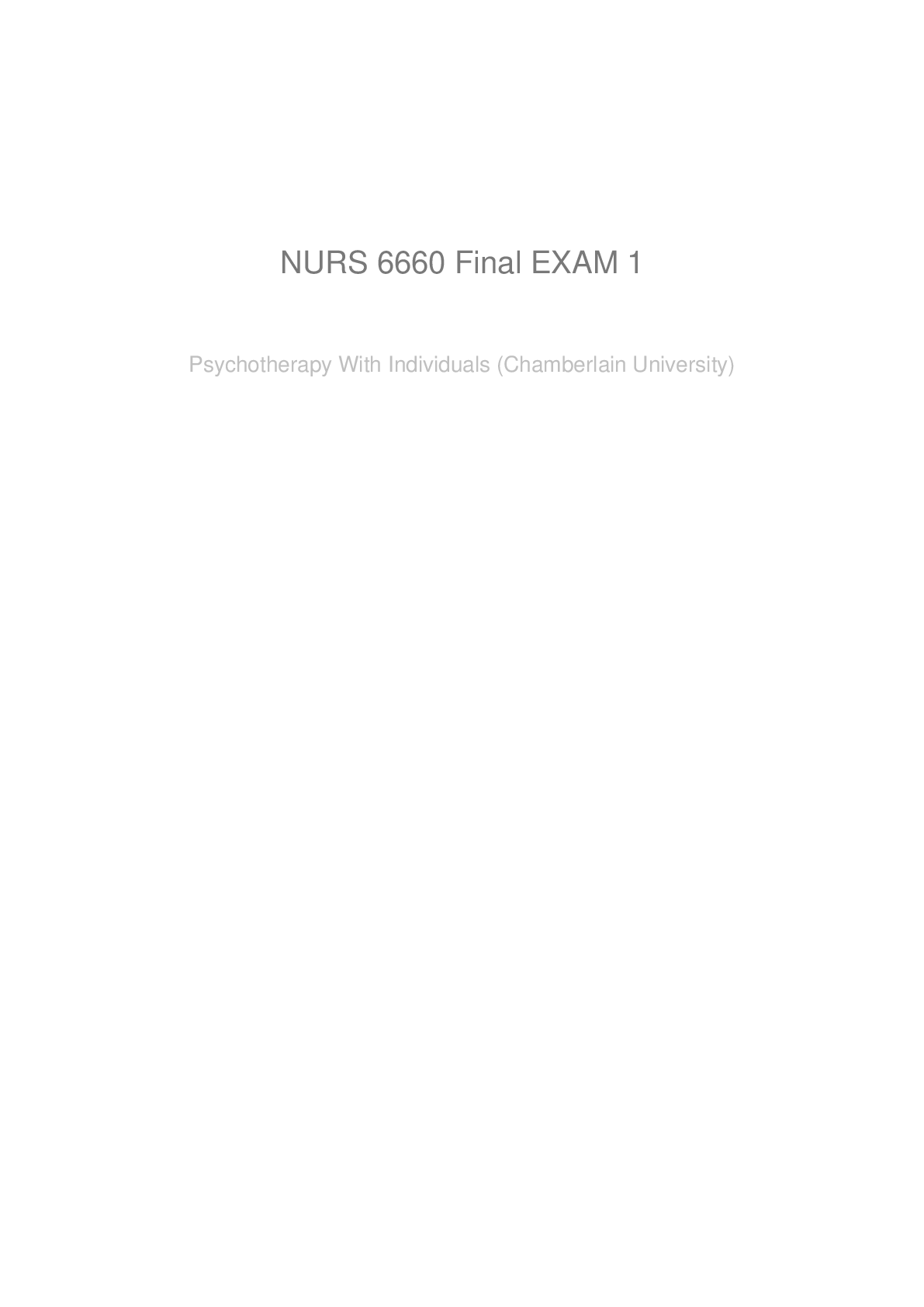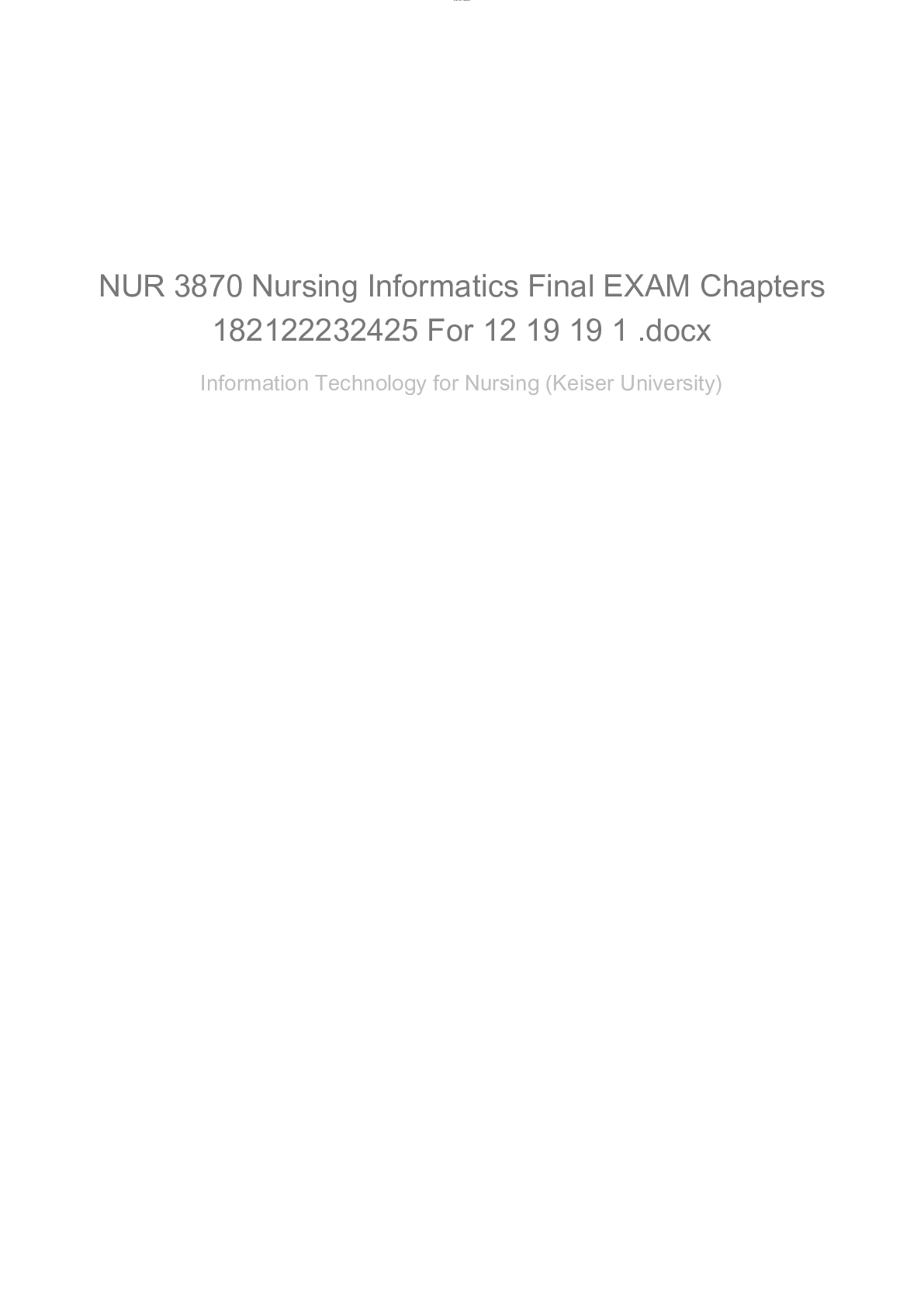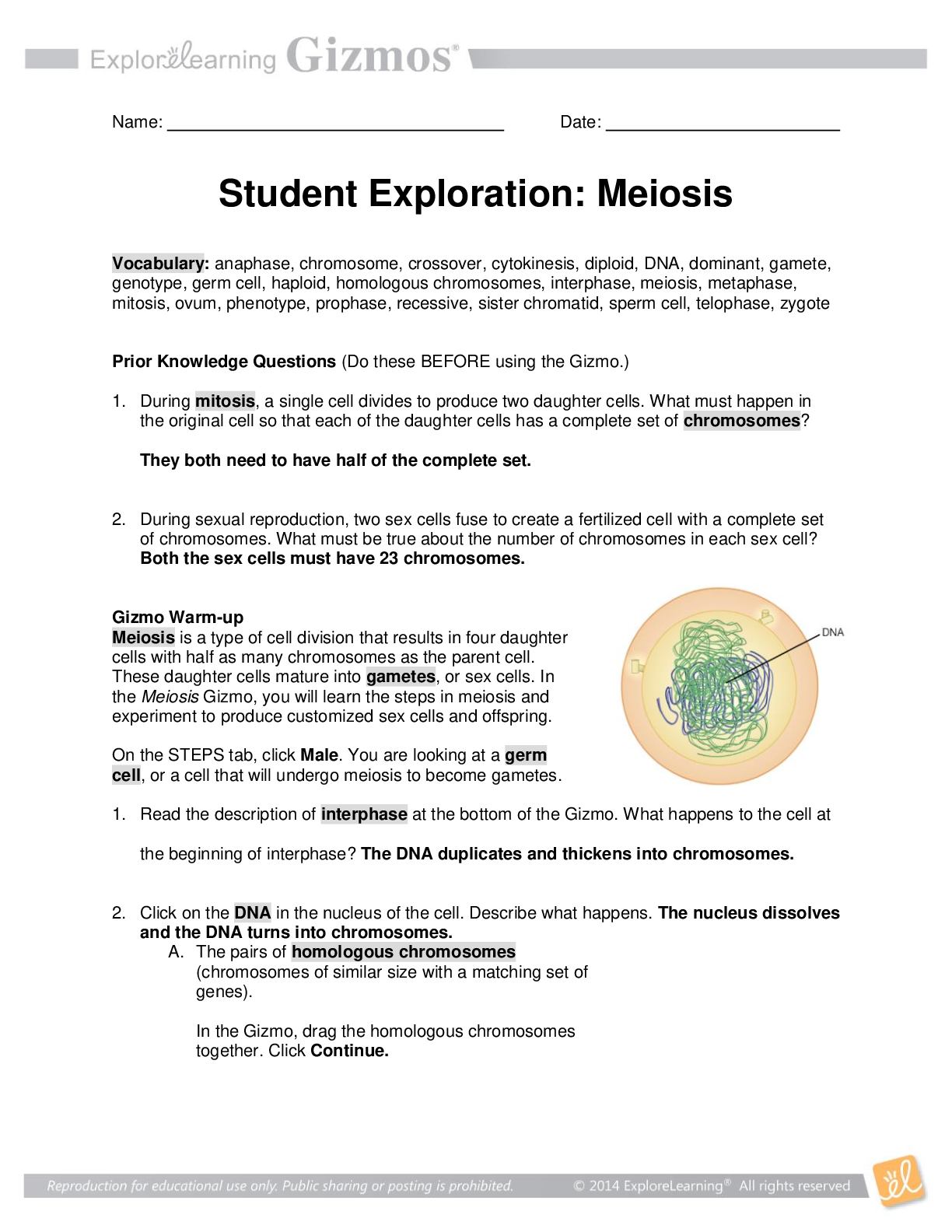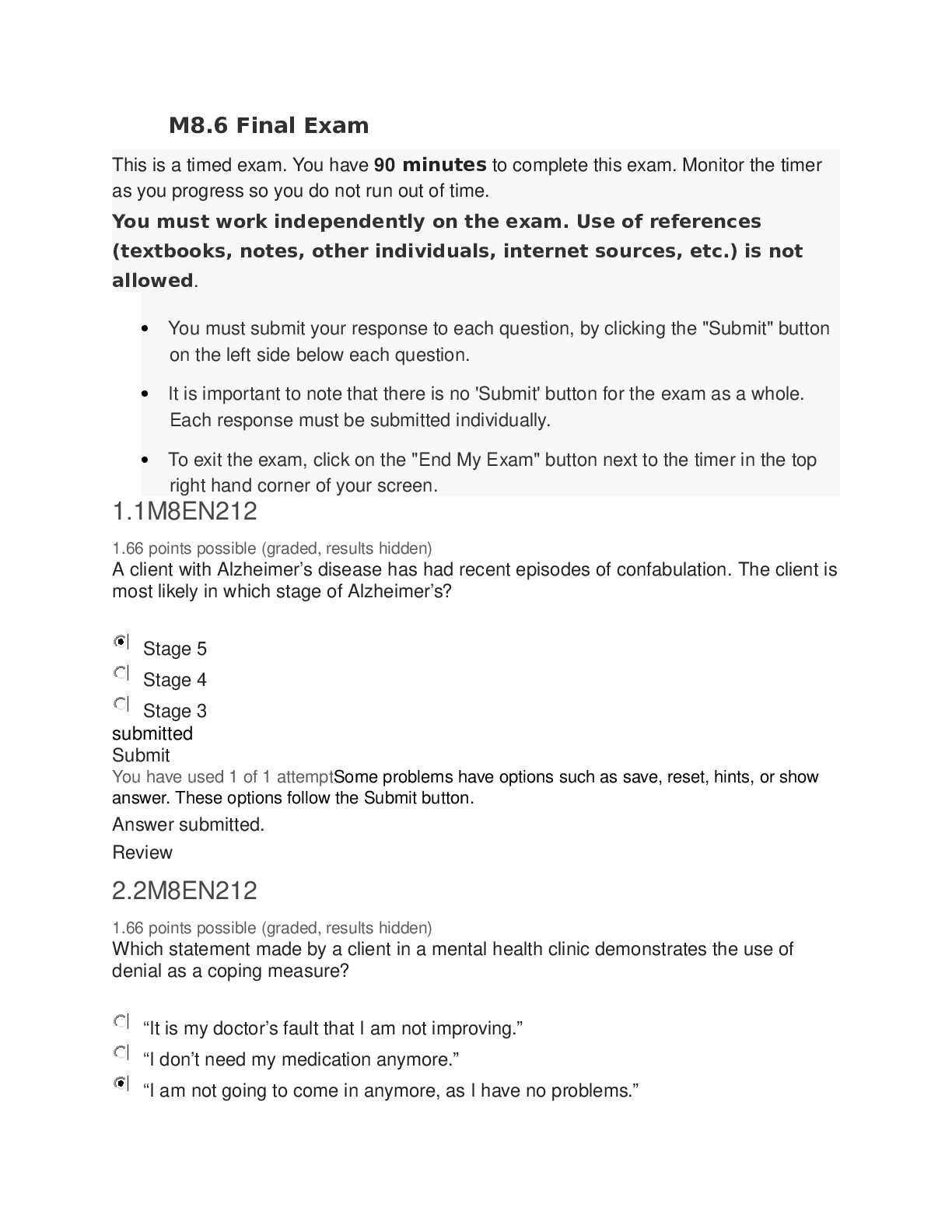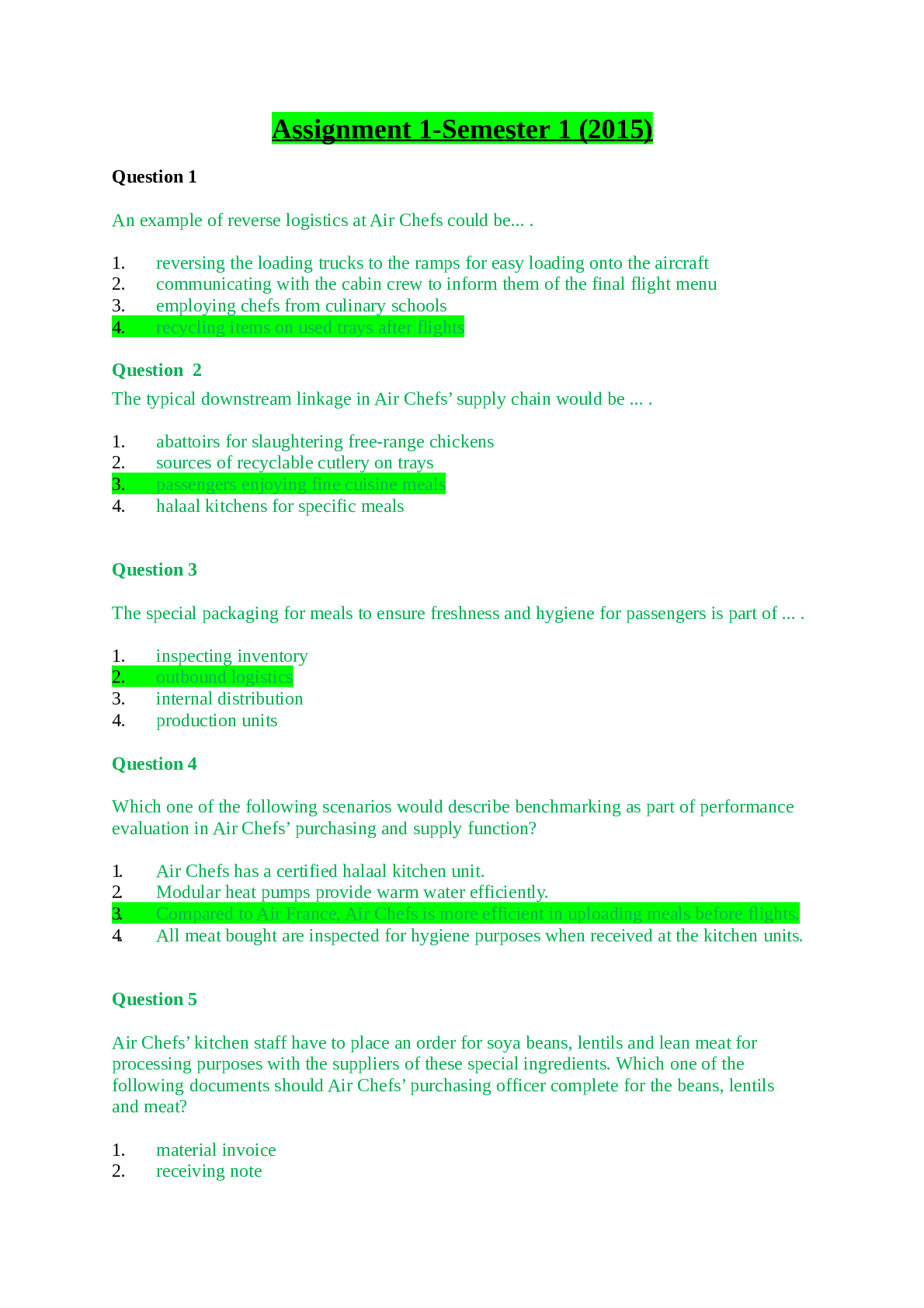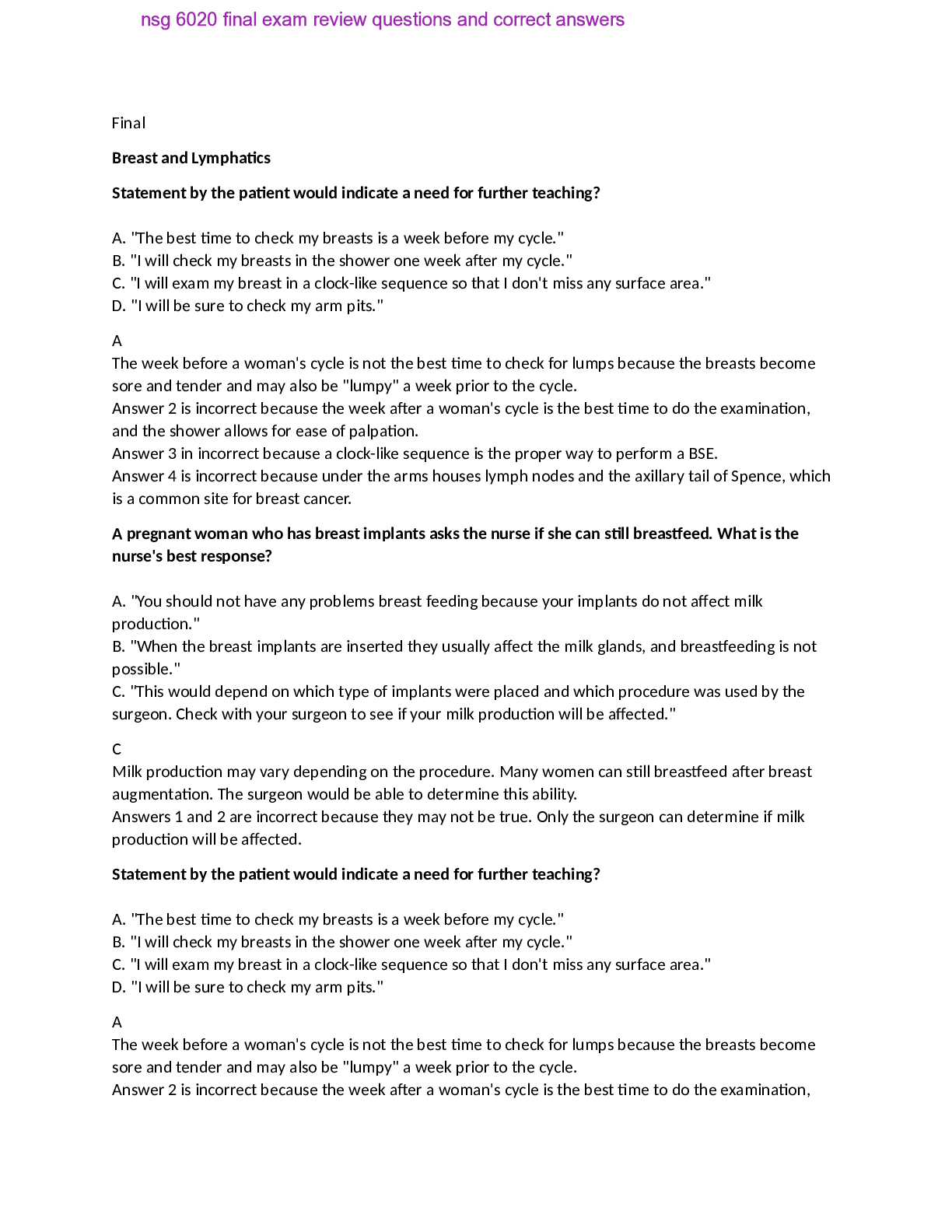Biology > Final Exam Review > Portage Learning BIOD 171/Microbiology Module 4 Exam Questions and Answer Key (All)
Portage Learning BIOD 171/Microbiology Module 4 Exam Questions and Answer Key
Document Content and Description Below
Question 1 0 / 0 pts What is another name for a liquid growth media, and what are the basic components? Your Answer: Growth media in a liquid form is often referred to as nutrient broth. Its com... position consists primarily of essential ingredients such as a rich source of sugars, amino acids, and vitamins. A nutrient broth provides the microbe with a source of carbon/energy, which encourages its expansion. Growth media in a liquid form is often referred to as nutrient broth. As the name implies its composition consists primarily of essential ‘ingredients’ such as a rich source of sugars, amino acids and vitamins. Together, a nutrient broth provides the microbe with a source of carbon/energy, which, in turn, encourages its expansion. Question 2 0 / 0 pts What is selective media? Your Answer: Selective media only allows for the growth of certain microbes while restricting the growth of all others. Selective media allows for only the growth of certain microbes while restricting the growth of all others. Question 3 0 / 0 pts What is differential media? Your Answer: Differential media is used to differentiate between two (or more) related microbes. Differential media is used to distinguish between two (or more) related microbes. Question 4 0 / 0 pts What are the requirements of a fastidious microbe? Your Answer: A fastidious microbe is an organism with complex growth requirements such that if absent it will not grow. Enriched media thus contain these specific and essential nutrients required for the growth of a particular subset of microorganisms. A fastidious microbe is an organism with complex growth requirements such that if absent it will not grow. Enriched medias thus contain these specific and essential nutrients required for the growth of a particular subset of microorganisms. Question 5 0 / 0 pts What is agar? Your Answer: Agar is liquid growth media that has had a hardening agent added to it. Agar is created when a polysaccharide derived from seaweed extract is added to growth media. Agar is used to create a solid, smooth surface on which microbes can grow. In its simplest form agar is liquid growth media that has had a hardening agent added to it. Agar is created when a polysaccharide derived from seaweed (algae) extract is added to growth media. Agar is used to create a solid, smooth surface on which microbes can grow. Question 6 0 / 0 pts True or False: LB agar is classified as a non-selective, differential media. True Correct! False LB agar is both a non-selective and non-differential media. LB agar is often used to expand unknown microbial population because it encourages microbial growth due to the presence of universal nutrients (non-differential) and absence of restrictive factors (non-selective). Question 7 0 / 0 pts What are the three forms of hemolysis found on blood agar plates? Your Answer: Alpha hemolysis, beta hemolysis, and gamma hemolysis Alpha (green), Beta (clear zones) and Gamma (white/tan). Microbes capable of alpha hemolysis present with greenish-brown color colonies due to the incomplete (partial) lysis of red blood cells. Beta hemolysis is classified as the capacity of a microbe to completely lyse red blood cells. The resulting lysis presents as a distinct zone of clearing around the growing colony. Gamma hemolysis designates the absence or lack of hemolytic activity and the resulting colonies are often white/tan in color growing on the red background color of the unaffected blood agar plate. Question 8 0 / 0 pts What is the primary purpose of Columbia CNA agar? Your Answer: As it suppresses the growth of Gram- bacteria, it is used for isolation of Gram+ bacteria. As it suppresses the growth of Gram-negative bacteria CNA agar is, therefore, used for isolation of Gram-positive microbes. Question 9 0 / 0 pts Name the type of plate derived from BAP that contains lysed red blood cells. Your Answer: Lysed RBCs are a primary component in the formulation of Chocolate agar. Lysed red blood cells (RBCs) are a primary component in the formulation of Chocolate agar. Question 10 0 / 0 pts Define the selective and differential abilities of a MacConkey agar plate. Your Answer: MacConkey agar is selective in that only Gram- microbes will grow on the agar. It is also considered differential as it distinguishes between microbes capable of fermenting lactose (red colonies) and those that are non-fermenters (white/tan colonies). MacConkey agar is selective in that only Gram-negative microbes will grow on the agar—Gram [Show More]
Last updated: 1 year ago
Preview 1 out of 10 pages

Reviews( 0 )
Document information
Connected school, study & course
About the document
Uploaded On
Aug 09, 2022
Number of pages
10
Written in
Additional information
This document has been written for:
Uploaded
Aug 09, 2022
Downloads
1
Views
117

